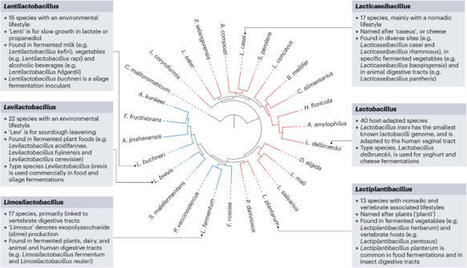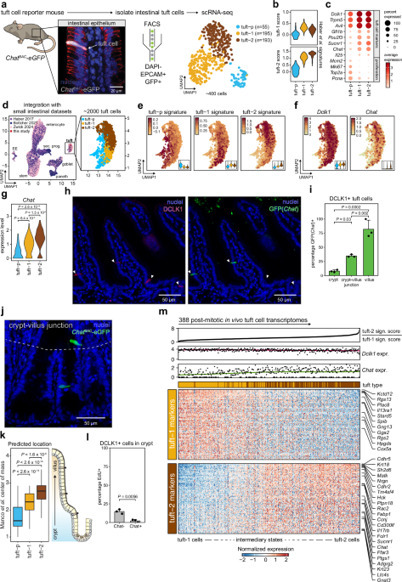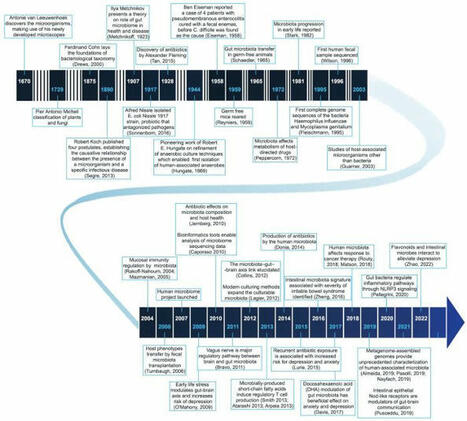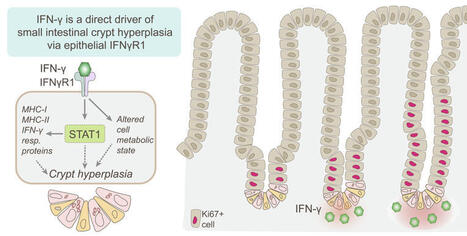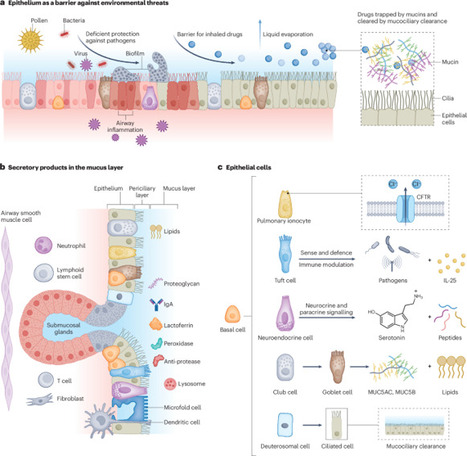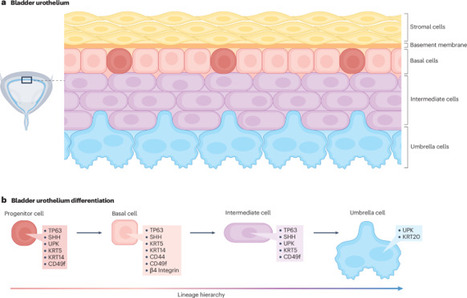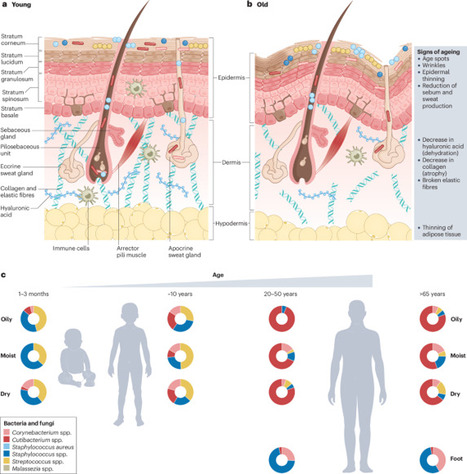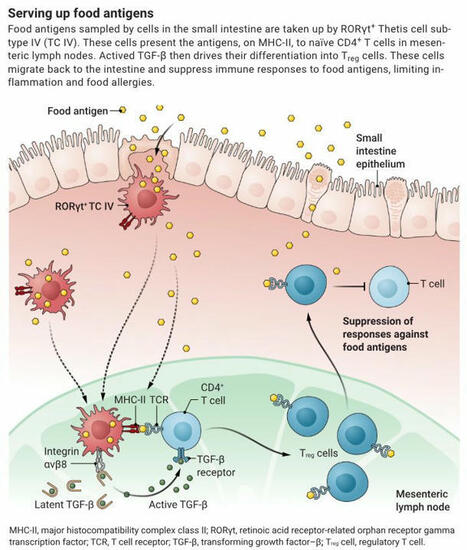 Your new post is loading...
 Your new post is loading...

|
Scooped by
Gilbert C FAURE
December 27, 2013 10:35 AM
|
is the most recent part of Immunology! It appeared less than 40 years ago, while systemic immunity exploded 60 years ago. It is still a minor part of Immunology teaching and research, while the mucosal immune system is at the frontline of encounters with germs, antigens... in other words the environment. major keywords: > 450 posts IgA http://www.scoop.it/t/mucosal-immunity?q=IgA > 125 posts tolerance http://www.scoop.it/t/mucosal-immunity?q=tolerance > 400 posts : microbiome http://www.scoop.it/t/mucosal-immunity?q=microbiome july 2015: almost 2100 scoops, >1700 visitors, >3900 views november 2017 >10K views of >3300 scoops june 2020 >17.6K views, >5.5K visitors, >4.5K scoops may 2024 >22K views, >6.9 visitors, >5.2 scoops

|
Scooped by
Gilbert C FAURE
October 15, 4:44 AM
|

|
Scooped by
Gilbert C FAURE
October 7, 10:55 AM
|
Inflammatory bowel diseases (IBD) have traditionally been considered T cell-driven disorders; however, accumulating evidence challenges this view and …

|
Scooped by
Gilbert C FAURE
October 6, 6:05 AM
|

|
Scooped by
Gilbert C FAURE
October 3, 4:03 AM
|
Horowitz A, et al. Paracellular permeability and tight junction regulation in gut health and disease. Nat Rev Gastroenterol Hepatol. 2023;20(7):417–432.View this article via: CrossRef PubMed Google Scholar Turpin W, et al.

|
Scooped by
Gilbert C FAURE
September 19, 10:52 AM
|
Event by Novo Nordisk Foundation Science Cluster Conference: Harnessing airway immunity for next-gen vaccines The 32nd Science Cluster Conference, "Harnessing airway immunity for next-gen vaccines", will feature world leaders exploring the latest advancements in airway immunity and innovative...

|
Scooped by
Gilbert C FAURE
September 12, 4:38 AM
|

|
Scooped by
Gilbert C FAURE
September 9, 7:38 AM
|
Lactobacilli encompass more than 300 species, spanning 25 genera, found in the microbiomes of humans, animals and plants with relevance in agriculture, foods and medicine. Lactobacilli comprise all bacteria previously assigned to the Lactobacillus genus and, similar to other lactic acid bacteria, are characterized by their saccharolytic, fermentation-energy metabolism and diverse enzymatic pathways that support redox balance and maintain intracellular pH. Some lactobacilli are pervasive in dairy, meat and plant foods, where they either contribute to spoilage and food waste or are desired and necessary for the production of fermented foods and animal feed. Strains of lactobacilli are the most applied probiotics tested in clinical studies. The study of host-associated intestinal and vaginal microbiomes has demonstrated that lactobacilli drive epithelial and immune cell responses, resulting in mainly beneficial effects on host health. This Review explores both established and emerging concepts related to this group of microorganisms. It highlights central tenants of their genetic diversity, metabolism, stress tolerance and distribution across host-associated microbiomes, as well as their importance in fermented foods and in health modulation as probiotics. With this accumulated knowledge, there remain substantial opportunities for expanded application of lactobacilli across different domains relevant to food production and health. Lactobacilli are important members of human, animal and insect microbiomes and are prominent in food fermentations. In this Review, Mejía-Caballero and Marco explore the diversity of lactobacilli, focusing on their fundamental traits and their applications in foods and medicine.

|
Scooped by
Gilbert C FAURE
August 21, 8:37 AM
|

|
Scooped by
Gilbert C FAURE
August 12, 10:12 AM
|

|
Scooped by
Gilbert C FAURE
August 11, 2:18 PM
|
Timeline of major research and development milestones related to the microbiome
Here’s a snapshot of how we got from Antonie van Leeuwenhoek’s first look at microbes to the "multi-omics era" shaping personalized medicine today:
📜 1670s – Antonie van Leeuwenhoek observes microorganisms for the first time.
🌱 1729 – Pier Antonio Micheli pioneers fungal classification.
🦠 1880s–1900s – Robert Koch formalizes germ theory; Alfred Nissle isolates the first probiotic E. coli strain.
💊 1928 – Alexander Fleming discovers antibiotics.
🧫 1958 – Ben Eiseman reports success with fecal microbiota transplants (FMT) in treating C. difficile.
🧪 1972 – First germ-free mice raised to study host–microbe interactions.
🧬 1995 – First complete bacterial genome sequenced (Haemophilus influenzae).
🌍 2007 – Human Microbiome Project launched.
🔄 2013 – FMT enters modern clinical practice for recurrent C. difficile.
🧠 2016–2020 – Studies link microbiota to cancer therapy response, depression, and gut–brain signaling.
🧷 2022 – Metagenome-assembled genomes expand our catalog of microbial diversity; dietary flavonoids shown to alleviate depressive symptoms.
https://lnkd.in/gqrz3nUD

|
Scooped by
Gilbert C FAURE
August 7, 1:49 PM
|

|
Scooped by
Gilbert C FAURE
August 4, 11:07 AM
|
|

|
Scooped by
Gilbert C FAURE
October 15, 4:46 AM
|
Crypt hyperplasia is a key feature of celiac disease and several other small intestinal inflammatory conditions. Analysis of the gut epithelial crypt zone by mass spectrometry-based tissue proteomics revealed a strong interferon-γ (IFN-γ) signal in active celiac disease.

|
Scooped by
Gilbert C FAURE
October 13, 4:57 AM
|
Airway mucus has a crucial role in protecting against inhaled pathogens and regulating water homeostasis, but it can also diminish the efficacy of therapeutic pulmonary delivery. Recent development in inhalable materials and biologics has introduced strategies to modify mucus properties, strengthening mucosal protection, advancing drug delivery and targeting and supporting effective water regulation. In this Review, we thoroughly examine the structure and function of airway mucus, along with the challenges and opportunities it presents for inhaled treatments. We explore new methods that enhance the protective role of mucus through physical reinforcement, pathogen neutralization, muco-trapping and rehydration, as well as strategies that overcome the mucus barrier to improve drug delivery, including physical modulation, mucoadhesive design, muco-penetrating design, mucolytics and active targeting. Finally, we discuss the clinical implications of these promising strategies, emphasizing the need to balance mucosal function with optimized therapeutic delivery. We seek to explore prospective ways to improve inhalation therapies for both infectious and chronic lung diseases by reviewing recent progress in inhalable materials and biologics. Airway mucus complicates treatment of respiratory disease by both defending the lungs and hindering inhaled drugs to cross the barriers. This Review explores translational advances in inhalable materials and biologics that enhance mucus protection or drug penetration.

|
Scooped by
Gilbert C FAURE
October 7, 4:28 AM
|
“A fog droplet isn’t a bad environment to live in"

|
Scooped by
Gilbert C FAURE
October 6, 2:00 AM
|
Cervical epithelial cells are far from passive bystanders in the body's immune system. New research shows they actually play an active and highly coordinated role in detecting and fighting infections.

|
Scooped by
Gilbert C FAURE
September 26, 12:52 PM
|
CSL Vifor and Travere Therapeutics, Inc., (NASDAQ: TVTX) support the recent publication of the updated clinical practice guidelines for the treatment of IgA Nephropathy (IgAN), Kidney Disease: Improving Global Outcomes (KDIGO) 2025 clinical practice guideline for the management of IgA Nephropathy...

|
Scooped by
Gilbert C FAURE
September 13, 1:46 PM
|

|
Scooped by
Gilbert C FAURE
September 11, 1:06 PM
|
🚰🐔 Drinking Water Vaccination in Poultry – Proper SOPs for Success
Mass vaccination of a flock via drinking water is one of the most practical, less stressful, and commonly used methods in poultry farms. But to achieve protection against diseases, strict SOPs must be followed.
Here’s a complete overview 👇
---
1️⃣ Drinking Water Vaccination
The goal is simple: every bird in the flock must receive the correct vaccine dose.
✅ Calculate water intake based on bird age (see standard tables).
✅ Vaccine water should be consumed within 1.5–2 hours.
✅ Withhold water for 1 hour before vaccination to encourage uniform drinking.
✅ Neutralize chlorine/heavy metals in water (using skimmed milk powder or vaccine stabilizer).
2️⃣ Storage & Transportation of Vaccine
📦 Vaccines must be handled with extreme care:
Store at 2–8°C (35–46°F) in a dedicated fridge.
Transport in a cool box with ice packs, keeping 4–8°C constant.
Only transport the required doses.
🛠️ Equipment Needed:
Clean container (80L approx.)
Vaccination can/water proportioner (5–10L)
Measuring jug, bucket, stirrer
Skimmed milk (stabilizer)
💡 Administration Steps:
1. Prepare vaccines on a clean surface using disposable gloves.
2. Neutralize chlorine (stock solution, 20 min wait).
3. Mix vaccine gently in water and distribute evenly.
4. Ensure all drinkers/nipples are filled before lowering.
5. Walk the flock to encourage uniform drinking.
6. Vaccine water must be consumed within 2 hours.
---
3️⃣ Evaluation of Drinking Water Vaccination
After vaccination, it’s critical to check how well the flock received the vaccine:
🔹 Dye Test: Add dye tablets with vaccine water. Birds’ tongues should stain blue. At least 90% of sampled birds should show staining.
🔹 Serology (ELISA/HI): Take blood samples from 20 random birds after ~3 weeks to measure antibody titers.
📊 Good Response Indicators:
High antibody titers
Coefficient of variation (CV) < 50%
Uniform flock immunity
---
✅ Conclusion
Drinking water vaccination is simple, quick, and flock-friendly. When SOPs are followed properly—from storage → preparation → administration → evaluation—the benefits are clear:
✔️ Better growth & weight gain
✔️ Higher egg production
✔️ Improved uniformity
✔️ Stronger disease resistance
---
💬 What’s your experience with drinking water vaccination in poultry?
#Poultry #AnimalHealth #Vaccination #Veterinary #SOPs #PoultryFarming

|
Scooped by
Gilbert C FAURE
September 4, 11:54 AM
|
Cellular plasticity, the ability of cells to reprogramme and alter their fate, has a pivotal role in maintaining homeostasis and facilitating tissue regeneration after injury. The bladder urothelium, a dynamic transitional epithelial layer, displays a highly plastic phenotype that enables its remarkable regenerative capacity in response to wounding. During both development and repair, urothelial cells exhibit considerable plasticity through processes such as dedifferentiation, transdifferentiation and epithelial-to-mesenchymal transition. Urothelial plasticity is not only crucial for healthy tissue repair but is also involved in pathological conditions, including cancer. In bladder tumorigenesis, urothelial cells exploit plasticity to acquire new phenotypic and functional characteristics, transitioning between distinct cellular states. This plasticity contributes to tumour heterogeneity, subtype switching, progression, metastasis and resistance to therapies. These dynamic cellular transitions are regulated by intrinsic and extrinsic factors, including transcriptional and epigenetic mechanisms, as well as microenvironmental influences. Targeting urothelial plasticity could offer novel therapeutic strategies for bladder-related diseases. In this Review the authors describe current knowledge on cellular plasticity in the bladder urothelium, emphasizing its role in bladder repair and tumorigenesis, and explore the molecular mechanisms of urothelial plasticity and discuss its potential as a novel therapeutic target for bladder-related diseases.

|
Scooped by
Gilbert C FAURE
August 14, 3:35 AM
|

|
Scooped by
Gilbert C FAURE
August 12, 3:25 AM
|
The skin microbiome is composed of a diverse community of microorganisms, including bacteria, fungi, viruses and mites. These microorganisms have a crucial role in maintaining skin health, protecting against pathogens and modulating immune responses. In recent years, our understanding of the skin microbiome has expanded substantially with the deployment of metagenomic sequencing. This technology, by reconstructing microbial species, strains and gene pathways in the microbiomes of different cohorts, has led to identification of numerous therapeutic targets and thus propelled the development of therapeutic approaches that are aimed at leveraging these microorganisms to treat skin conditions and to improve skin health. In this Review, we discuss the composition, ecology, functions and therapeutic horizons of the human skin microbiome, presenting examples of studies that highlight potential therapeutic targets in the skin microbiome, ongoing progress in the development of skin microbiome-based therapeutics and challenges. In this Review, Oh and Voigt explore the major characteristics and functions of the skin microbiome, and they highlight potential therapeutic targets in the skin microbiome and ongoing progress in the development of skin microbiome-based therapeutics.

|
Scooped by
Gilbert C FAURE
August 8, 3:38 AM
|

|
Scooped by
Gilbert C FAURE
August 5, 5:05 AM
|
STI Vaccines at #STIHIV2025 #IUSTI #ISSTDR
Professor Helen Rees
- HPV Vaccine uptakes rising with move to 1-dose and the pipeline of therapeutic HPV vaccines promising
- Syphilis vaccine candidates but all preclinical phase
- Herpes simplex vaccine candidates - preclinical phase
- Gonorrhoea - 4CMenB may be useful (~30-40% effective)
- Chlamydia - preclinical phase.
- Trichomoniasis - preclinical phase.
- Mpox - 3 licensed vaccines (originally for small pox) - access remains an issue
- Vaccine hesitancy needs to be addressed. Convenience. Complacency. Convenience. Context.
Professor Sanjay Ram
- Chlamydia: "bacteria that thinks it is a virus".
majority would generate antibodies against chlamydia but does not affect chance of reinfection.
high titres of antibodies may be associated with greater complications (PID).
Mice model - CD4 cells are important for clearing genital infection.
- Syphilis
previous syphilis can alter course of subsequent episode of syphilis
- Gono
No immunity following gonococcal infection.
Intravacc (intranasal) vaccine, LimmaTech Biologics "6-in-1" vaccine might be promising.

|
Scooped by
Gilbert C FAURE
July 28, 9:55 AM
|
Throughout life, everyone is exposed to foreign antigens that enter the body through the skin, lungs, and gut. In particular, early life sees the ingestion of many new types of food and encounters with microbes that colonize mucosal tissues. How immune systems learn to “tolerate” foreign antigens, yet remain quickly responsive to other threats such as pathogenic viruses and bacteria, remains an unsolved problem in immunology.
In a new Science study, researchers describe a key piece of the puzzle. The authors identify a subtype of antigen-presenting cells (APCs) in the mesenteric lymph nodes in mice that help train regulatory T cells (Treg cells) to suppress inflammatory responses to food antigens in the period around weaning. The identification of this APC subtype potentially opens the door to the development of therapies for food-associated allergies and inflammatory diseases.
Learn more in a new #SciencePerspective: https://scim.ag/44zUUSK | 10 comments on LinkedIn
|






 Your new post is loading...
Your new post is loading...



